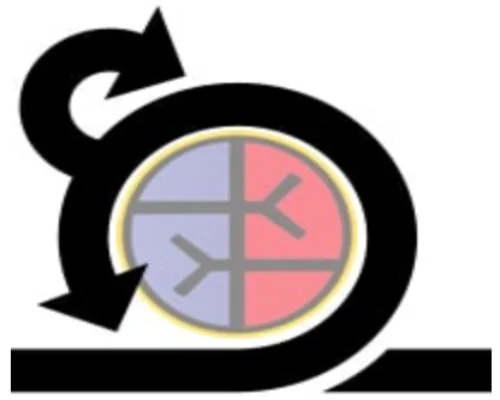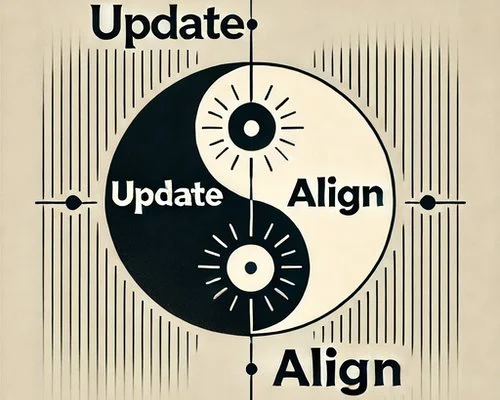The 24-Hour Empathy Framework: A Leadership Discipline That Transforms Teams
How to move beyond well-meaning intentions and make empathy a daily leadership habit
Last month, I watched it happen again. A senior director, thoughtful, respected, well-liked, responded to news that a team member was struggling under a heavy workload.
"I feel bad for you," she said, maintaining eye contact with genuine concern. "These timelines are tough. Let me know if there's anything I can do."
It sounded right. It felt caring. But by Friday, that team member had taken extended leave, citing burnout and mental stress.
I've seen this, or versions of it, across 15 countries and 200+ leaders. Smart, sincere people offering what they think is empathy, but delivering something else entirely: sympathy. And it's costing organisations more than they realise.
The Research Is Clear
Before we dive into the solution, here's what the data tells us about empathy's impact on business outcomes:
76% of employees with empathetic leaders report higher engagement vs 32% with unempathetic leaders, Catalyst. (2021).
Employees at unempathetic organisations are 1.5x more likely to leave within 6 months. Businessolver. (2023).
87% say empathy leads to increased efficiency and innovation. EY Consulting. (2023).
And yet, most leaders believe they're already empathetic. They care. They listen. They mean well.
The issue isn't intent — it's execution.
Sympathy ≠ Empathy
Sympathy is: "I feel bad for you." Empathy is: "I'm here with you. Let's walk this together."
That difference isn't semantic. It's structural. It's the difference between comfort and connection, between observing and participating. One keeps your people isolated. The other builds loyalty, trust, and resilience.
The Empathy Execution Gap
Most "empathy" in the workplace is sympathy in disguise. Language patterns give it away:
Sympathy responses: "That's really tough." "I understand how you feel." "Let me know if I can help."
Empathy responses: "That sounds overwhelming. Let's figure this out together." "I've cleared my calendar, what's the biggest pressure point right now?" "I'm moving that deadline. Your wellbeing matters more than the timeline."
Sympathy comforts. Empathy supports. And support takes action.
From Emotion to Discipline
Here's the reframe: Empathy is not a mood or a personality trait. It's a leadership discipline.
When we treat empathy as a skill, repeatable, time-bound, and behavioural, we create something measurable and scalable. Neuroscience backs this: intentional, empathetic action activates different neural pathways than passive empathetic feelings. This is about executive function, not just emotional attunement.
The 24-Hour Empathy Framework
A systematic, time-bound way to show up, not just in the moment, but in the hours that follow. Because real empathy isn't what you say. It's what you do.
🕐 Phase 1: 0–2 Hours — Pause + Presence
Stop multitasking.
Make eye contact or camera presence.
Turn toward the person.
Say: "I'm here. That sounds heavy, do you want to talk more about it?"
This moment matters more than any solution. Presence signals respect and acknowledgment. People don't need a fix, they need to feel seen.
Avoid:
Rushing to solve
Reassuring too quickly
Sharing your own story
🕖 Phase 2: 2–8 Hours — Understand + Acknowledge
Follow up intentionally, message, call, or check-in
Reinforce that the person stayed on your mind
Say: "Still thinking about what you shared earlier, how are you doing now?"
This is where trust is built. It says: "Your challenge matters beyond the moment."
🕛 Phase 3: 8–24 Hours — Take Supportive Action
This is where empathy becomes tangible:
Examples:
"I've moved the deadline."
"I've spoken to the client to adjust scope."
"You can work from home this week. Focus where you need to."
"I've reallocated some of John's bandwidth to support you this week."
"I've spoken with the client about extending the timeline — they understood completely."
"I've blocked your calendar Friday afternoon. Take the mental health time you need."
When no action is needed: "I'm still here if anything shifts. I'm checking in again tomorrow."
Empathy doesn't always fix. Sometimes, it simply holds space, consistently.
Action vs. Overreach: Empathy with Boundaries
Empathy isn't about absorbing someone else's pain. It's about walking beside them without losing your footing.
Act when: workload, systems, or deliverables are affected.
Be present when: the issue is personal, delicate, or they've asked for space.
Cultural Nuance Matters
Empathy looks different across cultures. Some teams value silence. Others expect rapid intervention. Honour that.
Adapt the rhythm, keep the intent.
Real-World Case: When It Works
When Sarah, a senior director at a FMCG company, was struggling with multiple critical projects and personal pressure:
I paused our coaching to listen fully.
I followed up the same evening with a message.
I spoke with her manager (the MD) about reallocating one of her projects the next morning.
Her words later: "For the first time in my career, I felt truly supported rather than just managed."
She rolled out the framework with her team, creating what she called "the most psychologically safe environment I've ever worked in." Not because of deadline adjustments, but because she made empathy real.
From Values to Lived Culture
At Japan Tobacco International, "Empathise with Others" is a core value. But values only matter when they shape behaviour.
The 24-Hour Empathy Framework turns that value into a muscle you build daily.
It's not softness. It's leadership maturity. It's operationalising emotional intelligence.
Try This: The 30-Day Empathy Challenge
Week 1: Practice Phase 1 (Pause + Presence)
Week 2: Add Phase 2 (Follow-up)
Week 3: Apply full 24-hour cycle to 5 interactions
Week 4: Introduce to team + build shared practice
Empathy Scales Performance
🚀 Engagement ↑ 50%
🔐 Retention ↑ 40%
💡 Innovation ↑ 67%
🧠 Adaptability ↑ 30%
This isn't about being "nice." It's about being effective.
Empathetic leadership doesn't just retain talent, it unleashes it.
Your 24 hours start now.
Resources:
Thanks for reading. If you’re new here, I’m Kubair Shirazee, and I solve the gap between what leaders intend and what actually happens, transforming good intentions into measurable business impact. After coaching 200+ leaders across 15 countries, I help organisations move beyond the status quo to create workplaces that are more adaptive, more humane, and demonstrably more impactful.










